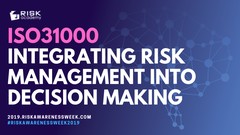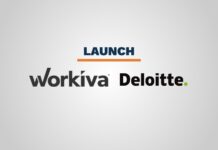Наши популярные онлайн курсы
Avoiding risk altogether is the single surest way to fail over time, as innovation, competition, and customer lethargy will slowly eat away at the advantages you currently enjoy. Because there is plenty of evidence that organizations don’t take risk well – or at least well enough for long-run interests – we need to adopt practices that ensure our future.
The DCRO Institute as a collaboration among practicing board members and C-suite executives has developed an extensive program to help current and aspiring board members become comfortable with the positive governance of risk-taking. In just its first year, registrants for its programs come from more than 65 countries, and graduates of its flagship Board Members’ Course on Risk, an intensive study program, are found serving in boardrooms and C-suites on five continents.
The DCRO Institute uses this program to develop Qualified Risk Directors to serve onboards, bringing the understanding of this positive governance of risk-taking mindset to essential strategic discussions at organizations of all sizes and across diverse industries and cultures.
Boards and senior executives who embrace risk in this framework foster an environment of innovation, allowing organizations to grow at rates that allow them to escape the well-documented corporate fade in performance.
When a board changes its view of how risk is governed and taken, the transition to embracing risk carries throughout the organization to every employee, especially those that face customers. Today when most talk about risk, they still think of the fear of loss or uncertainty, especially given our current health, social, economic, and political climate. Loss and uncertainty are partially correct conceptualizations of risk, but both fall short of the approach we need to take to be our best fiduciaries.
The staged transition from the board’s embrace of risk-taking, to the C-suite’s implementation of that guidance, to the frontline employees’ management of essential risk-taking, leads us to the most crucial conceptual change of risk-taking: its impact on the trust that all capital providers and external influencers have in us. Organizations have an expressed purpose and stakeholders trust us to pursue that purpose in value-enhancing ways. That trust, in turn, makes all transactions more effortless and less expensive.
That trust can be transformative. It lowers the cost of all forms of capital from stakeholders; it makes external members of our network more willing to assume exposure to us as customers, employees, investors, lenders, regulators, and more; it enhances our bottom line through increased revenues and reduced costs. And perhaps most important, trust enhances our brand and intangible value, something that now accounts for more than 80% of publicly-traded company value.

You’ll find that putting these concepts into action will increase your confidence level. You will learn to embrace risk in an intelligent and value-creating way, giving you a competitive advantage and a remarkable ability to fulfill your corporate purpose, whatever that may be.
Additional resources:
Check out other decision making books
RISK-ACADEMY offers online courses

+ Buy now
Informed Risk Taking
Learn 15 practical steps on integrating risk management into decision making, business processes, organizational culture and other activities!
19,999,99

+ Buy now
ISO31000 Integrating Risk Management
Alex Sidorenko, known for his risk management blog http://www.riskacademy.blog, has created a 25-step program to integrate risk management into decision making, core business processes and the overall culture of the organization.
199,999,99

+ Buy now
Управление рисками
В этом коротком и очень увлекательном курсе, Алексей Сидоренко расскажет о причинах внедрения риск менеджмента, об особенностях принятия управленческих решений в ситуации неопределенности и изменениях в новом стандарте ИСО 31000:2018.
19,999,99






























